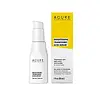What's inside
What's inside
 Key Ingredients
Key Ingredients

 Benefits
Benefits

 Ingredients Side-by-side
Ingredients Side-by-side

Water
Skin ConditioningPropanediol
SolventAloe Barbadensis Leaf Juice
Skin ConditioningNiacinamide
SmoothingTranexamic Acid
AstringentKojic Acid
AntioxidantCarthamus Tinctorius Seed Oil
MaskingZinc PCA
HumectantGlycerin
HumectantSclerotium Gum
Emulsion StabilisingXanthan Gum
EmulsifyingSodium Levulinate
Skin ConditioningHydroxyethylcellulose
Emulsion StabilisingSodium Phytate
Ethylhexylglycerin
Skin ConditioningSodium Anisate
AntimicrobialCitric Acid
BufferingWater
Skin ConditioningAzelaic Acid
BufferingButylene Glycol
HumectantAloe Barbadensis Leaf Juice
Skin ConditioningPropanediol
SolventCaprylic/Capric Triglyceride
MaskingKojic Acid
AntioxidantPolysorbate 20
EmulsifyingGlycerin
HumectantCaprylyl Glycol
EmollientHexylresorcinol
AntimicrobialEthyl Linoleate
EmollientLeuconostoc/Radish Root Ferment Filtrate
AntimicrobialDodecane
PerfumingHydroxyethylcellulose
Emulsion StabilisingXanthan Gum
EmulsifyingHelianthus Annuus Seed Oil
EmollientSqualane
EmollientBisabolol
MaskingGlyceryl Laurate
EmollientGlyceryl Undecylenate
EmollientAllantoin
Skin ConditioningRibose
HumectantSodium Acetate
BufferingBakuchiol
AntimicrobialGlycyrrhiza Glabra Root Extract
BleachingCellulose
AbsorbentPhenoxyethanol
PreservativeWater, Azelaic Acid, Butylene Glycol, Aloe Barbadensis Leaf Juice, Propanediol, Caprylic/Capric Triglyceride, Kojic Acid, Polysorbate 20, Glycerin, Caprylyl Glycol, Hexylresorcinol, Ethyl Linoleate, Leuconostoc/Radish Root Ferment Filtrate, Dodecane, Hydroxyethylcellulose, Xanthan Gum, Helianthus Annuus Seed Oil, Squalane, Bisabolol, Glyceryl Laurate, Glyceryl Undecylenate, Allantoin, Ribose, Sodium Acetate, Bakuchiol, Glycyrrhiza Glabra Root Extract, Cellulose, Phenoxyethanol
 Reviews
Reviews

Ingredients Explained
These ingredients are found in both products.
Ingredients higher up in an ingredient list are typically present in a larger amount.
Aloe Barbadensis Leaf Juice comes from leaves of the aloe plant. Aloe Barbadensis Leaf Juice is best known for helping to soothe sunburns. It is also anti-inflammatory, moisturizing, antiseptic, and can help heal wounds.
Aloe is packed with good stuff including Vitamins A, C, and E. These vitamins are antioxidants, which help fight free-radicals and the damage they may cause. Free-radicals are molecules that may damage your skin cells, such as pollution.
Aloe Barbadensis Leaf Juice also contains sugars. These sugars come in the form of monosaccharides and polysaccharides, folic acid, and choline. These sugars are able to help bind moisture to skin.
It also contains minerals such as calcium, 12 anthraquinones, fatty acids, amino acids, and Vitamin B12.
Learn more about Aloe Barbadensis Leaf JuiceGlycerin is already naturally found in your skin. It helps moisturize and protect your skin.
A study from 2016 found glycerin to be more effective as a humectant than AHAs and hyaluronic acid.
As a humectant, it helps the skin stay hydrated by pulling moisture to your skin. The low molecular weight of glycerin allows it to pull moisture into the deeper layers of your skin.
Hydrated skin improves your skin barrier; Your skin barrier helps protect against irritants and bacteria.
Glycerin has also been found to have antimicrobial and antiviral properties. Due to these properties, glycerin is often used in wound and burn treatments.
In cosmetics, glycerin is usually derived from plants such as soybean or palm. However, it can also be sourced from animals, such as tallow or animal fat.
This ingredient is organic, colorless, odorless, and non-toxic.
Glycerin is the name for this ingredient in American English. British English uses Glycerol/Glycerine.
Learn more about GlycerinHydroxyethylcellulose is used to improve the texture of products. It is created from a chemical reaction involving ethylene oxide and alkali-cellulose. Cellulose is a sugar found in plant cell walls and help give plants structure.
This ingredient helps stabilize products by preventing ingredients from separating. It can also help thicken the texture of a product.
This ingredient can also be found in pill medicines to help our bodies digest other ingredients.
Learn more about HydroxyethylcelluloseKojic acid comes from fungi and can also be from fermented foods. It helps even out skin tone and reduce hyperpigmentation.
This ingredient works by blocking tyrosine, an enzyme that starts the process of skin darkening.
Kojic Acid is antifungal and often used to treat fungal infections. Additionally, it can help fight bacteria with its antimicrobrial properties. This can help treat acne as well.
A similar ingredient is arbutin.
Learn more about Kojic AcidPropanediol is an all-star ingredient. It softens, hydrates, and smooths the skin.
It’s often used to:
Propanediol is not likely to cause sensitivity and considered safe to use. It is derived from corn or petroleum with a clear color and no scent.
Learn more about PropanediolWater. It's the most common cosmetic ingredient of all. You'll usually see it at the top of ingredient lists, meaning that it makes up the largest part of the product.
So why is it so popular? Water most often acts as a solvent - this means that it helps dissolve other ingredients into the formulation.
You'll also recognize water as that liquid we all need to stay alive. If you see this, drink a glass of water. Stay hydrated!
Learn more about WaterXanthan gum is used as a stabilizer and thickener within cosmetic products. It helps give products a sticky, thick feeling - preventing them from being too runny.
On the technical side of things, xanthan gum is a polysaccharide - a combination consisting of multiple sugar molecules bonded together.
Xanthan gum is a pretty common and great ingredient. It is a natural, non-toxic, non-irritating ingredient that is also commonly used in food products.
Learn more about Xanthan Gum